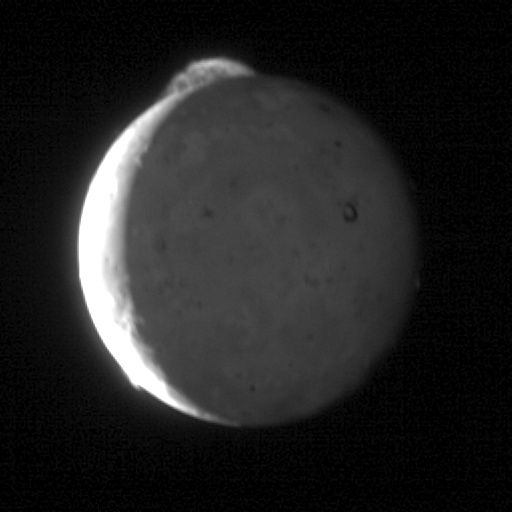
Tvashtar Paterae
Encyclopedia


Volcanism on Io
Volcanism on Io, a moon of Jupiter, produces lava flows, volcanic pits, and plumes of sulfur and sulfur dioxide hundreds of kilometres high. This volcanic activity was discovered in 1979 by Voyager 1 imaging scientists...
of Jupiter
Jupiter
Jupiter is the fifth planet from the Sun and the largest planet within the Solar System. It is a gas giant with mass one-thousandth that of the Sun but is two and a half times the mass of all the other planets in our Solar System combined. Jupiter is classified as a gas giant along with Saturn,...
's moon Io
Io (moon)
Io ) is the innermost of the four Galilean moons of the planet Jupiter and, with a diameter of , the fourth-largest moon in the Solar System. It was named after the mythological character of Io, a priestess of Hera who became one of the lovers of Zeus....
located near the moon's north pole. It is a series of paterae, or volcanic crater
Volcanic crater
A volcanic crater is a circular depression in the ground caused by volcanic activity. It is typically a basin, circular in form within which occurs a vent from which magma erupts as gases, lava, and ejecta. A crater can be of large dimensions, and sometimes of great depth...
s. It is named after Tvashtar
Tvastar
In Vedic religion,' , is the first born creator of the universe. In Yajurveda purusha suktha and in 10 mandala of Rg veda his character and attributes are merging with the concept like Hiranyagharbha/Prajapathy or Brahma.The term also transliterated as Tvaṣṭr, nominative , is the heavenly...
, the Hindu
Hinduism
Hinduism is the predominant and indigenous religious tradition of the Indian Subcontinent. Hinduism is known to its followers as , amongst many other expressions...
god of blacksmith
Blacksmith
A blacksmith is a person who creates objects from wrought iron or steel by forging the metal; that is, by using tools to hammer, bend, and cut...
s.
Tvashtar was studied by the Galileo spacecraft over several years. During this time, a 25 kilometres (15.5 mi) long, 1 to 2 km (0.621372736649807 to 1.2 mi) high curtain of lava was seen to erupt from one patera, a lake of superheated silicate lava erupted in the largest patera
Patera
A patera was a broad, shallow dish used for drinking, primarily in a ritual context such as a libation. These paterae were often used in Rome....
, and finally a plume of gas burst out, rising 385 kilometres (239.2 mi) above the moon and blanketing areas as far away as 700 kilometres (435 mi).
An eruption on Tvashtar on February 26 2007 was photographed by the New Horizons
New Horizons
New Horizons is a NASA robotic spacecraft mission currently en route to the dwarf planet Pluto. It is expected to be the first spacecraft to fly by and study Pluto and its moons, Charon, Nix, Hydra and S/2011 P 1. Its estimated arrival date at the Pluto-Charon system is July 14th, 2015...
probe as it went past Jupiter en route to Pluto
Pluto
Pluto, formal designation 134340 Pluto, is the second-most-massive known dwarf planet in the Solar System and the tenth-most-massive body observed directly orbiting the Sun...
. The probe observed an enormous 330 kilometres (205.1 mi) high plume from the volcano, with an as-yet unexplained filamentary structure made clearly visible by the background light from the sun.
See also
- Volcanoes on other planetary bodies
- Tvashtar

